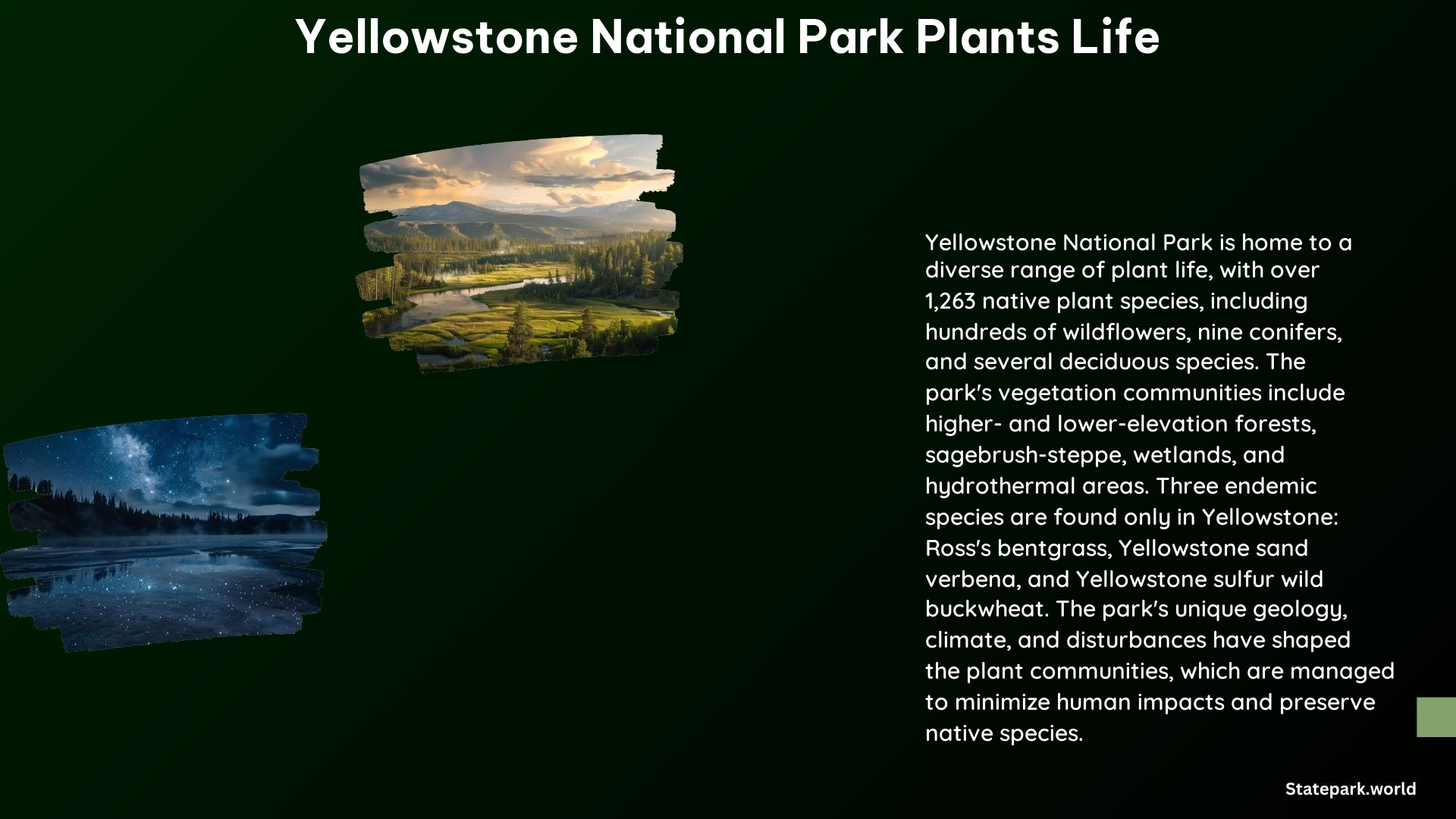Yellowstone National Park is a natural wonder, home to a diverse array of plant life that thrives in the park’s unique geological and climatic conditions. From the towering forests to the vibrant hydrothermal plant communities, the park’s vegetation is a testament to the resilience and adaptability of life in this dynamic ecosystem.
Vegetation Communities in Yellowstone National Park
Yellowstone National Park is home to several distinct vegetation communities, each with its own unique characteristics and adaptations.
Higher- and Lower-Elevation Forests
These forests cover approximately 80% of the park and are dominated by a variety of coniferous tree species, including lodgepole pine, whitebark pine, Engelmann spruce, white spruce, subalpine fir, Douglas-fir, Rocky Mountain juniper, common juniper, and limber pine.
Sagebrush-Steppe
The northern range of Yellowstone is characterized by the sagebrush-steppe community, which is dominated by sagebrush and other shrub species.
Wetlands
Yellowstone’s wetlands include a variety of habitats, such as lakes, rivers, ponds, streams, seeps, marshes, fens, wet meadows, forested wetlands, and hydrothermal pools.
Hydrothermal Plant Communities
The park’s unique hydrothermal areas, such as geyser basins and hot springs, support rare and specialized plant communities that have adapted to the extreme thermal conditions.
Endemic Plant Species of Yellowstone National Park

Yellowstone National Park is home to three plant species that are found nowhere else in the world:
- Ross’s Bentgrass (Agrostis rossiae): This grass species grows only in the geyser basins in the Firehole River drainage and at Shoshone Geyser Basin.
- Yellowstone Sand Verbena (Abronia ammophila): This plant is found along the shore of Yellowstone Lake.
- Yellowstone Sulphur Flower (Eriogonum umbellatum var. cladophorum): This variety of the sulphur flower is only found in the Firehole River drainage.
Other Notable Plant Species in Yellowstone
Wildflowers
Yellowstone is home to hundreds of wildflower species, including lupine, arnica, springbeauties, glacier lilies, and paintbrush.
Trees
In addition to the coniferous species found in the park’s forests, Yellowstone is also home to nine tree species, including lodgepole pine, whitebark pine, Engelmann spruce, white spruce, subalpine fir, Douglas-fir, Rocky Mountain juniper, common juniper, and limber pine.
Shrubs
Common shrub species in Yellowstone include common juniper, sagebrush, and Rocky Mountain maple.
Management and Conservation of Yellowstone’s Plant Life
The National Park Service is dedicated to the preservation and management of Yellowstone’s native plant communities. This includes efforts to minimize human-caused impacts, restore areas of disturbance, and control the spread of invasive plant species.
Visiting and Exploring Yellowstone’s Plant Life
Yellowstone National Park is open year-round, but the best times to visit for the best opportunities to see the park’s diverse plant life are during the spring and summer months. Guided tours and educational programs are available to help visitors learn about and appreciate the park’s unique and fascinating plant communities.
References
- National Park Service. (2021). Plants – Yellowstone National Park. Retrieved from https://www.nps.gov/yell/learn/nature/plants.htm
- National Park Service. (2023). Resources & Issues Chapter 6 Vegetation. Retrieved from https://www.nps.gov/yell/learn/upload/6_RI_2023_Vegetation_508web.pdf
- Yellowstone National Park Lodges. (2024). The Incredible Flora and Fauna of Yellowstone. Retrieved from https://www.yellowstonenationalparklodges.com/connect/yellowstone-hot-spot/infographic-spot-these-plants-and-animals-in-yellowstone-national-park/.
